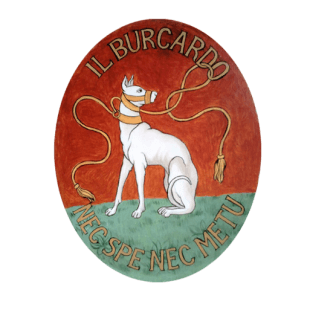
Il Burcardo
Il Burcardo, Italianised name of Johannes Burckardt, was born in 1445 in the then German town of Niederhaslach. Of humble origins, he dedicated his life to his religious vocation, obtaining various positions in the clergy. His rapid career led him to become pontifical protonotary and master of ceremonies, and he was later appointed bishop of Orte and Civita Castellana in 1503.
Between 1491 and 1500 he built his Roman residence in the Sant'Eustachio district (the current Dimora delle Cinque Lune), which he defended until his death from the opposing property ownership claims of the powerful Cesarini family. He is remembered for his numerous writings and especially for the "Liber notarum", which is an important historical source on life at the court of the popes of the Renaissance. He died in Rome in 1506.
Pope Pius II
Enea Silvio Piccolomini, who became Pope with the name of Pius II in 1458, was a great humanist, to whom we owe the urban redesign of Pienza, his hometown, into a gem of urban planning. He was called the "neopagan" Pope for his love of the classics and the joys of earthly life. As a flirtatious and libertine cardinal, he wrote, among other things, the scandalous Historia De Duobus Amantibus. He is particularly remembered for his extravagant offer to crown Mehmed II, Sultan of the Ottoman Empire, Roman Emperor of the East if he converted.
The elegant and multifaceted figure of Pope Pius II is the inspiration for the interior of theAntica Dimora delle Cinque Lune, which echoes the voluptuous desire of the Italian aristocracy of that period of rebirth to surround themselves with refined visual imagery.
In particular, the furnishings on the third floor refer to Piccolomini's singular syncretic obsession with the Christianisation of the Turkish East, which he vainly attempted to absorb into what had by then become Christian imperial Rome.
The rooms on the fourth floor are dominated, in turn, by the recurrent image of the peacock that so often opens its infinite circle on the Christian sarcophagi of the first centuries and refers to the sense of immortality that is rare to breathe under other skies.

